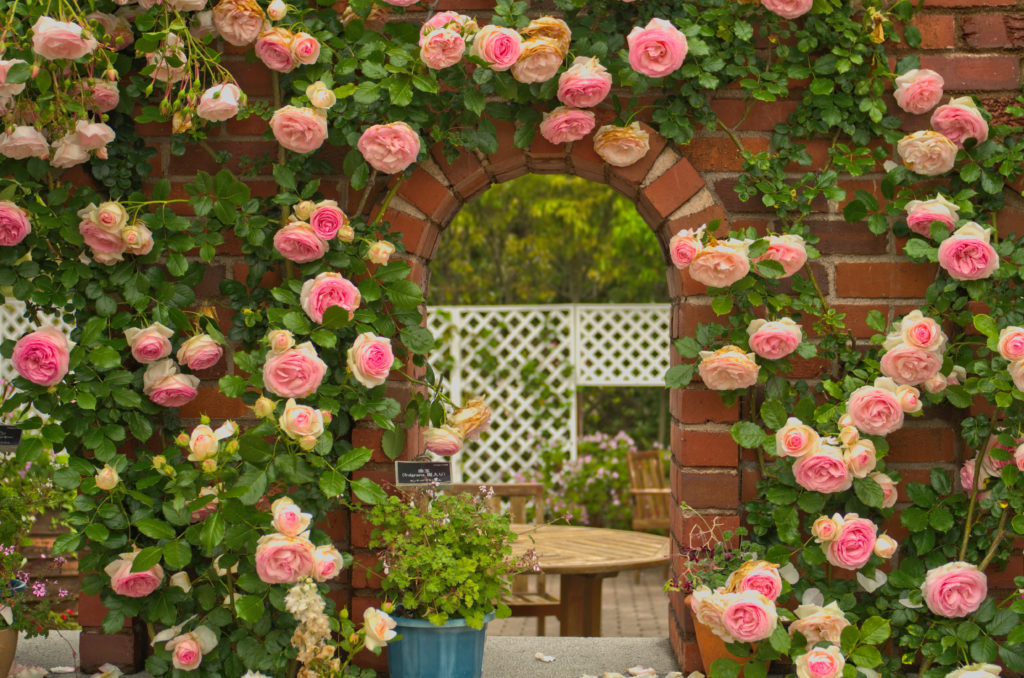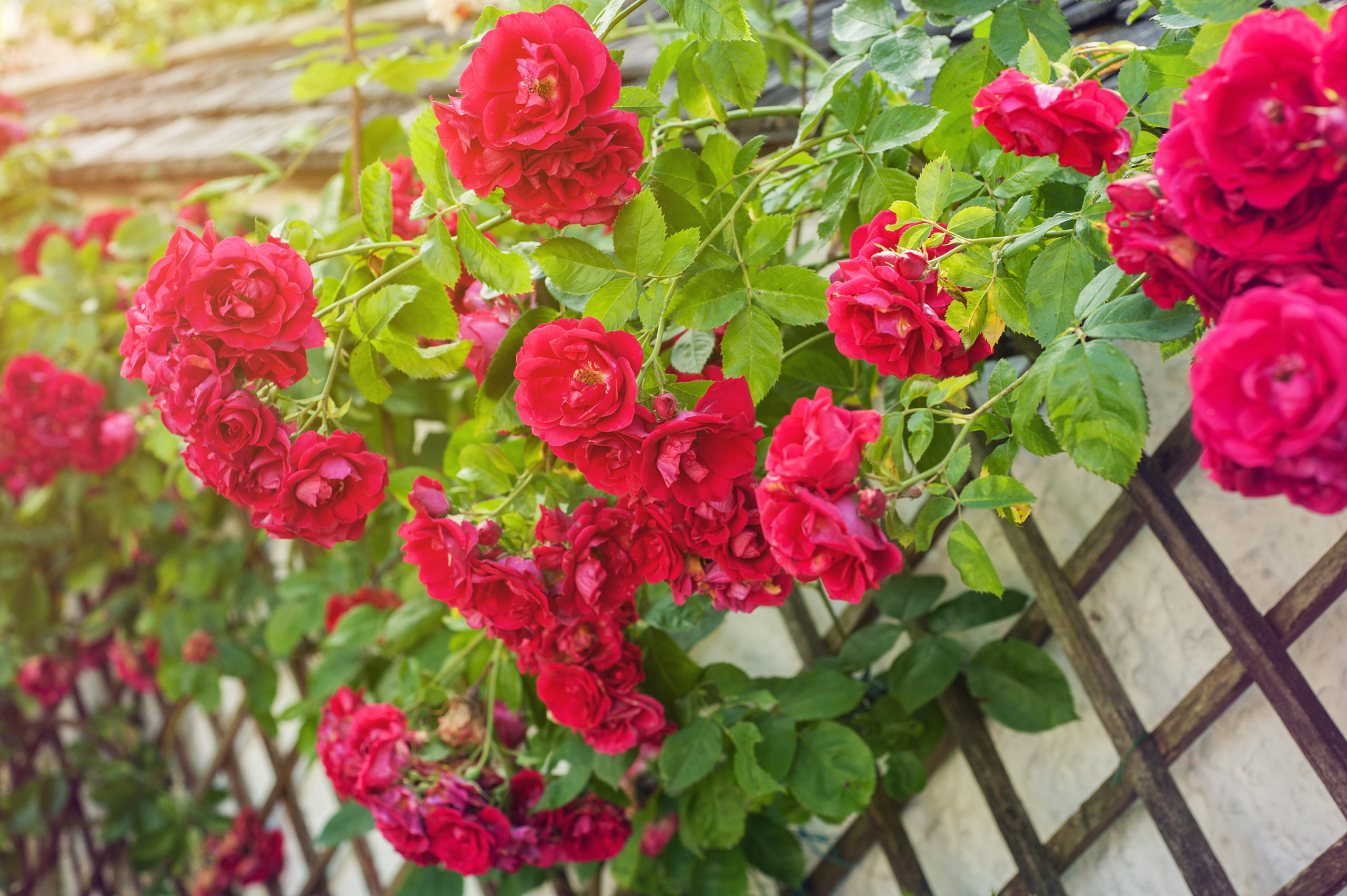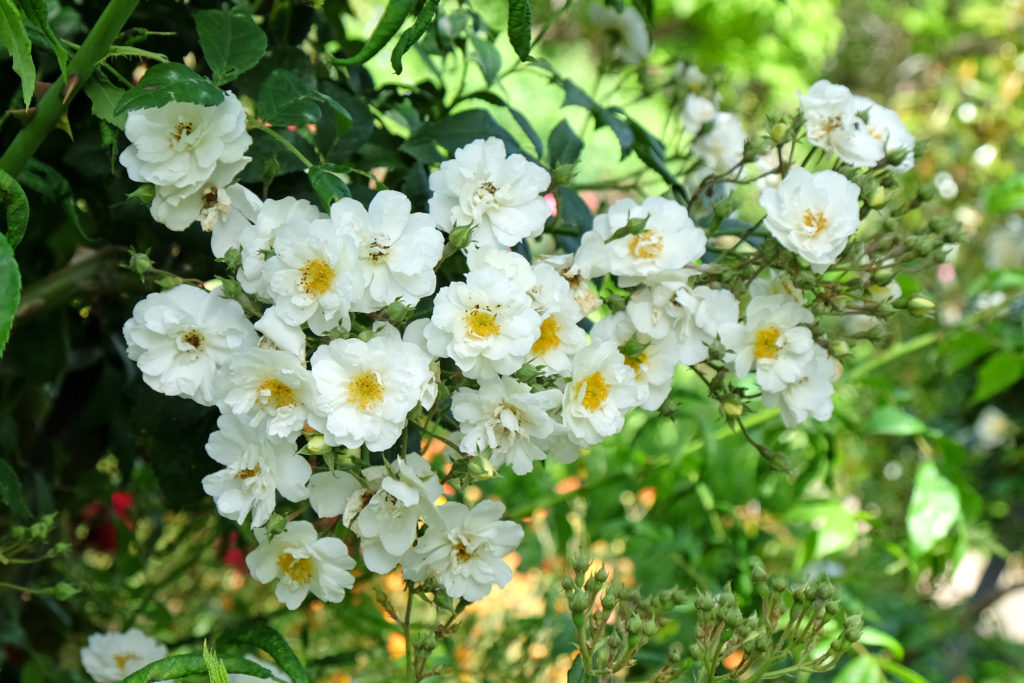Climbing roses are a spectacular addition to any garden, offering height, structure, and a continuous display of beautiful blooms throughout the growing season. Unlike rambling roses, which grow vigorously and flower in a single flush, climbing roses tend to have a more controlled growth habit and repeat flower, making them a popular choice for training against walls, fences, arches, and pergolas. Their long, flexible stems can be guided and tied to supports, creating a stunning vertical display that adds colour and fragrance to the garden.

Common Types of Climbing Roses
There are many varieties of climbing roses, each with its own distinct characteristics. Some of the most well-loved climbing roses include:
- ‘New Dawn’ – A classic, pale pink climbing rose that is known for its vigorous growth, repeat flowering, and light fragrance. It thrives in most garden conditions and is highly disease-resistant.
- ‘Iceberg’ – A climbing version of the famous floribunda rose, this white-flowered variety produces an abundance of delicate, lightly scented blooms throughout the summer and autumn.
- ‘Zephirine Drouhin’ – One of the best thornless climbing roses, this variety has deep pink, highly fragrant flowers and can tolerate partial shade, making it an excellent choice for walls or fences that do not receive full sun.
- ‘Eden Rose’ (also known as ‘Pierre de Ronsard’) – A romantic, old-fashioned climbing rose with large, full blooms in shades of creamy pink and soft blush. It is a perfect choice for a classic English garden.
- ‘Golden Showers’ – A bright yellow climbing rose that produces a cheerful display of fragrant, semi-double flowers. It is ideal for bringing warmth and brightness to a trellis or pergola.
Caring for Climbing Roses
Climbing roses require some care and maintenance to ensure they remain healthy and continue to flower profusely year after year. They should be planted in a sunny location with well-drained, fertile soil. Regular feeding with a balanced rose fertiliser encourages strong growth and continuous flowering. Watering should be regular during hot spells, ensuring that the soil remains moist but not waterlogged. A thick layer of mulch applied around the base of the plant in spring helps to retain moisture, suppress weeds, and improve soil quality.
Pruning is an essential aspect of caring for climbing roses, helping to maintain their shape, encourage flowering, and prevent them from becoming tangled or overgrown. The best time to prune is in late winter or early spring before new growth begins. Start by removing any dead, damaged, or weak stems, then train the strongest and healthiest canes to the support structure, tying them in place. Horizontal training of the main stems encourages more lateral growth and an abundance of blooms. Side shoots can be lightly pruned to encourage fresh growth and flowering.
Climbing roses can be prone to pests and diseases such as aphids, black spot, and powdery mildew. Regularly checking the foliage and removing affected leaves can help prevent the spread of disease. Encouraging beneficial insects such as ladybirds and lacewings, which feed on aphids, is a natural way to control pests. Applying an organic or chemical rose treatment as needed can also help to keep the plant healthy.
Ways to Use Climbing Roses in the Garden
Climbing roses are incredibly versatile and can be used in a variety of ways to enhance a garden. One of the most popular uses is to train them along a wall or fence, where they can soften harsh lines and provide a continuous display of colour. For the best results, a sturdy trellis or horizontal wires should be installed to support the canes, allowing them to be tied and trained in an even pattern.
Another beautiful way to use climbing roses is over an archway or pergola, where they create a romantic, cascading effect as they drape over the structure. This is especially effective when paired with other climbers such as clematis, which can provide additional colour and interest throughout the season.
Climbing roses can also be used to frame doorways, windows, or garden entrances, adding a welcoming and traditional feel to a home or outdoor space. When planted at the base of a pillar or obelisk, they create a stunning vertical feature that can act as a focal point in the garden.
For a more natural and informal look, climbing roses can be grown through large shrubs or small trees, allowing them to weave through existing foliage and add bursts of colour. This method works well in cottage gardens or wildlife-friendly spaces where a more relaxed and organic aesthetic is desired.
With the right care and placement, climbing roses bring elegance, height, and timeless beauty to any garden, making them a cherished choice for gardeners of all styles.


